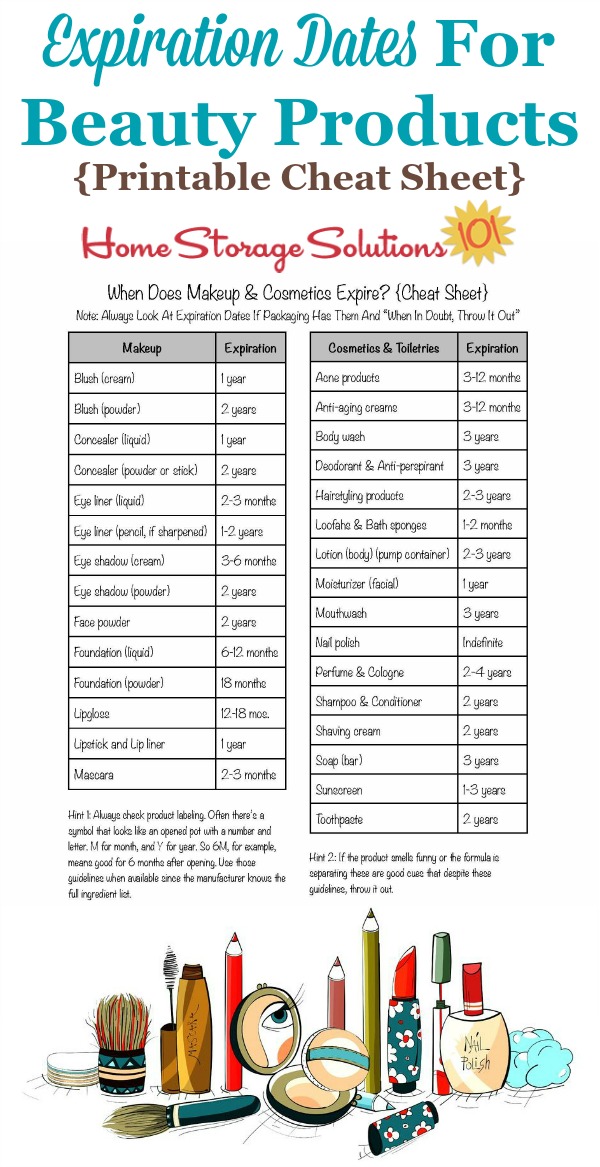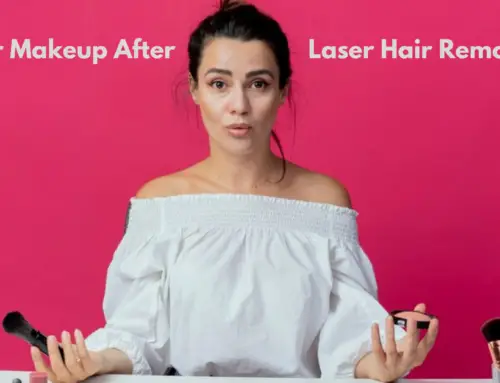Eyeshadow is a staple for many makeup enthusiasts, but how long does it actually last? Surprisingly, eyeshadow can expire just like any other beauty product. So, how long is eyeshadow good for? Let’s delve into the world of cosmetics to find out.
When it comes to the lifespan of eyeshadow, it’s important to consider both the quality and formulation of the product. Generally, powdered eyeshadows can stay good for up to two years if stored properly. However, cream or liquid eyeshadows have a shorter shelf life and may be good for around six months to a year. It’s crucial to pay attention to any changes in texture, smell, or color, as these can indicate that the eyeshadow has gone bad and should be discarded.
When properly stored, eyeshadow can stay good for up to two years. To ensure longevity, keep your eyeshadows in a cool, dry place away from direct sunlight and moisture. Avoid touching the product with dirty brushes or fingers to prevent bacterial contamination. If the eyeshadow changes in texture, color, or develops an odor, it’s time to toss it out. Regularly inspect your eyeshadows to ensure they are still safe to use.

How Long Is Eyeshadow Good For?
Eyeshadow is a staple in many makeup collections, but have you ever wondered how long it’s good for? Like other cosmetics, eyeshadow has a shelf life, and using expired eyeshadow can lead to skin irritations and infections. In this article, we’ll explore how long eyeshadow is good for and provide tips on how to maximize its lifespan.
Understanding the Shelf Life of Eyeshadow
Eyeshadow, like most beauty products, comes with a recommended shelf life. This is typically indicated by a small symbol on the packaging that resembles an open jar with a number followed by the letter “M.” The number represents the number of months the product is considered to be safe and effective after opening. For example, if you see “12M,” it means the eyeshadow is good for 12 months after opening.
It’s important to note that the shelf life of eyeshadow can be influenced by various factors, including the presence of preservatives, the formulation of the product, and how it is stored. While these general guidelines provide a good baseline, it’s crucial to use your judgment and pay attention to any changes in the texture, scent, or appearance of the eyeshadow.
Factors That Affect the Longevity of Eyeshadow
Several factors can impact the longevity of eyeshadow:
- The quality of the ingredients: High-quality eyeshadows that contain preservatives tend to have a longer shelf life compared to those with minimal preservatives or natural ingredients.
- The packaging: Eyeshadows in airtight and light-blocking containers, such as palettes with solid lids, are less likely to be exposed to air and light, which can degrade the product.
- Product usage: Properly sanitizing your brushes and avoiding double-dipping can help prevent bacteria from contaminating your eyeshadow, extending its lifespan.
- Storage conditions: Store your eyeshadow in a cool, dry place away from direct sunlight and moisture. Exposing it to extreme temperatures or high humidity can cause the formula to break down more quickly.
Signs That Your Eyeshadow Has Expired
Using expired eyeshadow can lead to skin irritation, eye infections, and decreased product performance. Here are some signs that your eyeshadow may have expired:
- Change in smell: If your eyeshadow has a rancid or off-putting smell, it’s a clear indication that it has expired.
- Texture changes: Expired eyeshadows may become dry, crumbly, or develop a film on the surface.
- Color alteration: The color of an expired eyeshadow may change or appear less vibrant than when it was fresh.
- Skin reactions: If you experience any redness, itchiness, or irritation after applying eyeshadow, it could be a sign that it’s no longer safe to use.
Maximizing the Lifespan of Your Eyeshadow
To ensure your eyeshadow lasts as long as possible, consider the following tips:
- Keep the packaging clean: Regularly wipe down the exterior of your eyeshadow palettes and individual shadows to remove any product buildup or residue that could contaminate the formula.
- Use clean brushes: Clean your eyeshadow brushes regularly to prevent the transfer of dirt, oils, and bacteria onto the product.
- Avoid sharing: Sharing eyeshadow with others increases the risk of cross-contamination and can introduce bacteria into the product.
- Close the packaging tightly: Make sure to secure the lid of your eyeshadow palette or compact after each use to minimize air exposure.
- Store properly: Keep your eyeshadow in a cool, dry place away from direct sunlight and humidity.
When to Replace Your Eyeshadow
While eyeshadow can last for several months or even years, it’s essential to use your discretion and replace it if you notice any signs of expiration or if it no longer performs as desired. Investing in new eyeshadow ensures optimal color payoff, blendability, and reduces the risk of potential eye infections or skin irritations.
How Can I Know If My Eyeshadow Has Expired?
If you’re unsure whether your eyeshadow has expired or not, here are some steps you can take to assess its condition:
- Check for any changes in smell: If your eyeshadow has a foul or off-putting odor, it’s a clear indication that it’s no longer suitable for use.
- Inspect the texture: Expired eyeshadows may become dry, flaky, or develop a film on the surface. If the texture is significantly different from when you first purchased it, it’s likely expired.
- Evaluate the color: If the color appears dull, faded, or has changed from its original shade, it’s a sign that the eyeshadow has expired.
Ultimately, it’s crucial to trust your instincts and prioritize your safety when it comes to using makeup products. If in doubt, it’s best to err on the side of caution and replace your eyeshadow to ensure the best quality and performance.
Key Takeaways
- When properly stored, eyeshadow can last up to two years.
- Check for any changes in color, texture, or smell as signs of expired eyeshadow.
- Keep your eyeshadow palette clean and avoid sharing it with others.
- Replacing your eyeshadow regularly can help prevent eye infections and irritation.
- Proper storage in a cool, dry place can extend the shelf life of your eyeshadow.
Frequently Asked Questions
Find answers to commonly asked questions about the shelf life of eyeshadow.
1. Can eyeshadow expire?
Yes, eyeshadow can expire. Just like any other cosmetic product, eyeshadow has a shelf life. Over time, the ingredients in eyeshadow can degrade, leading to changes in texture, color, and performance. Expired eyeshadow may also harbor bacteria, which can be harmful to your eyes or skin. Proper storage and regular usage can help prolong the lifespan of your eyeshadow.
To determine if your eyeshadow has expired, look for signs such as a change in color, a foul odor, or a dry and crumbly texture. Additionally, if you’ve had the eyeshadow for more than two years, it’s best to replace it, even if it appears to be in good condition.
2. How long is eyeshadow good for?
The lifespan of eyeshadow depends on various factors, including its formulation, packaging, and storage conditions. Generally, powdered eyeshadows can last for 2-3 years, while cream and liquid eyeshadows have a shorter lifespan of 6-12 months. However, these are just guidelines, and it’s essential to use your judgment and monitor the product’s quality. If your eyeshadow starts to smell off or develop an odd consistency, it’s time to replace it.
Remember to store your eyeshadow in a cool, dry place away from direct sunlight and moisture. Avoid storing it in your bathroom, as the humidity can accelerate the product’s degradation.
3. Can I still use expired eyeshadow?
Using expired eyeshadow is not recommended. Expired eyeshadows may contain harmful bacteria that can cause eye infections or skin irritations. Additionally, expired eyeshadows may not perform well, with uneven pigmentation or a patchy application. It’s best to err on the side of caution and replace your expired eyeshadows to ensure the safety of your eyes and skin.
If you’re unsure about the expiry date of your eyeshadow, check for any visible signs of expiration, such as changes in color, texture, or smell. When in doubt, it’s best to discard it and purchase a new one.
4. How can I make my eyeshadow last longer?
To extend the life of your eyeshadow, follow these tips:
- Keep your eyeshadow palette or singles tightly closed when not in use to minimize exposure to air and moisture.
- Avoid touching your eyeshadow with dirty fingers or brushes to prevent bacteria transfer.
- Consider investing in airtight storage containers or magnetic palettes for easier organization and to keep your eyeshadows fresh.
- Use clean brushes or applicators to pick up the product to avoid contamination.
- Avoid storing your eyeshadow in high humidity areas like the bathroom.
Following these practices can help maintain the quality and performance of your eyeshadows for a longer period.
5. Are there any signs that my eyeshadow has gone bad?
Yes, there are a few signs that indicate your eyeshadow has gone bad:
- Change in color: If the eyeshadow has become significantly darker, lighter, or has developed an unusual hue, it’s a sign of expiration.
- Texture changes: If the eyeshadow has become dry, hard, or crumbly, it has likely passed its prime.
- Off smell: A foul or rancid odor is a clear indication of spoilage.
- Poor performance: If the eyeshadow no longer applies smoothly, lacks pigmentation, or becomes patchy, it’s time to say goodbye.
When you notice any of these signs, it’s best to discard the eyeshadow and replace it with a fresh one to ensure the best application and minimize the risk of eye or skin issues.

In summary, the lifespan of eyeshadow depends on its type and quality.
Powder and cream eyeshadows typically last for about two years, while liquid eyeshadows have a shorter lifespan of about one year. It is important to regularly check the expiration dates and the condition of your eyeshadows to ensure they are still safe to use. If they start to smell strange or change in texture, it is best to dispose of them and purchase new ones. Remember to store your eyeshadows properly to prolong their shelf life and maintain their quality.






Leave A Comment